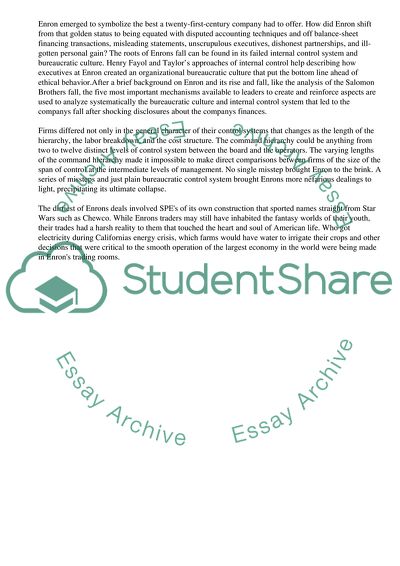Cite this document
(Internal Control of Enron Essay Example | Topics and Well Written Essays - 1750 words, n.d.)
Internal Control of Enron Essay Example | Topics and Well Written Essays - 1750 words. https://studentshare.org/business/1536147-sociology
Internal Control of Enron Essay Example | Topics and Well Written Essays - 1750 words. https://studentshare.org/business/1536147-sociology
(Internal Control of Enron Essay Example | Topics and Well Written Essays - 1750 Words)
Internal Control of Enron Essay Example | Topics and Well Written Essays - 1750 Words. https://studentshare.org/business/1536147-sociology.
Internal Control of Enron Essay Example | Topics and Well Written Essays - 1750 Words. https://studentshare.org/business/1536147-sociology.
“Internal Control of Enron Essay Example | Topics and Well Written Essays - 1750 Words”. https://studentshare.org/business/1536147-sociology.


